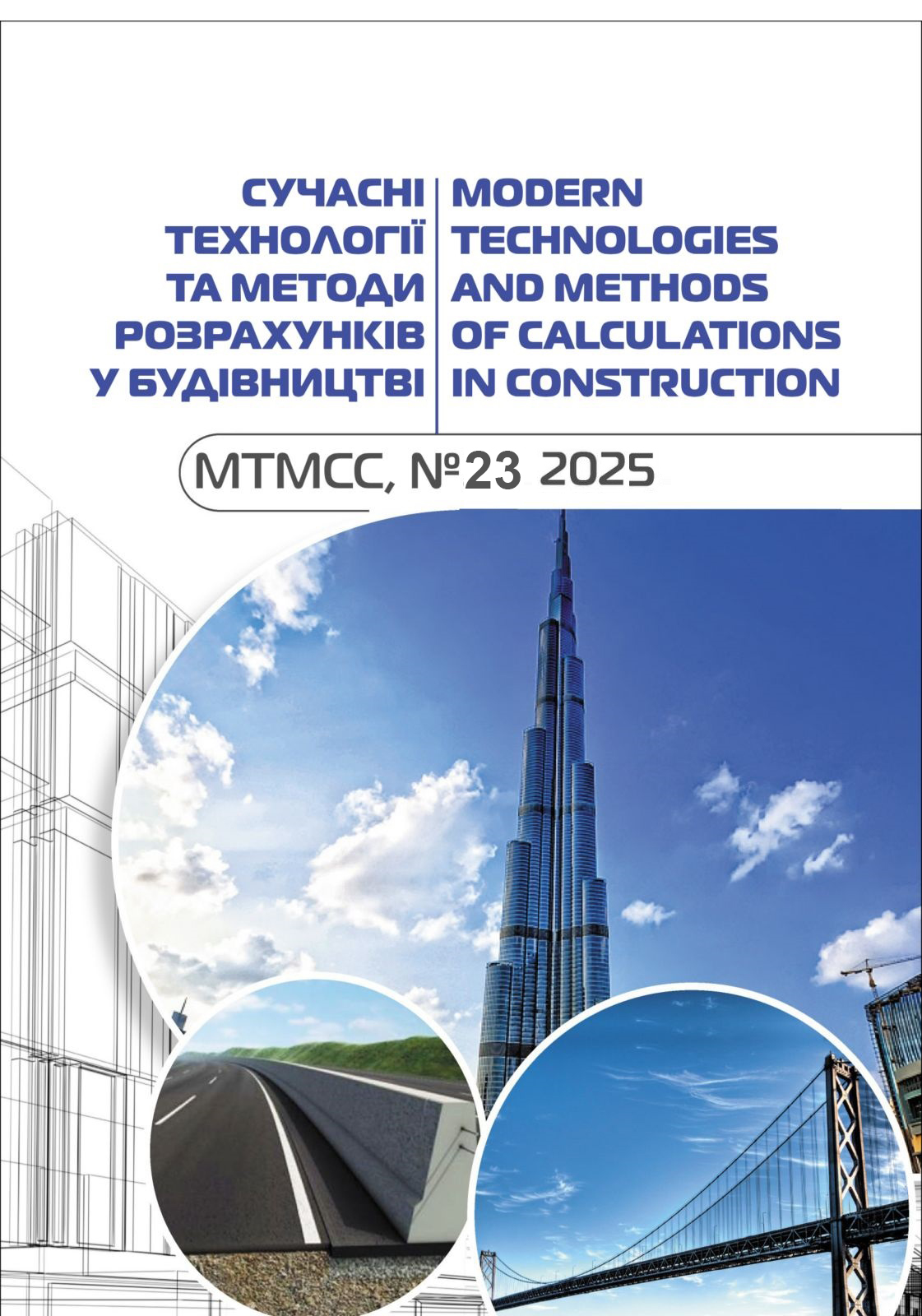Features of the methodology for integration engineering networks with a heat pump in building in the valley of Sapalayivka River in Lutsk
Abstract
Analysis of literary sources revealed stable trends: the technical and technological development of engineering networks in the direction of utilizing smart and intelligent technologies; and increasing requirements for energy efficiency and environmental friendliness of engineering networks and construction objects that integrate these networks. Examples of hydromorphological transformation of urban rivers were analyzed. A conclusion was made about the importance of preserving the Sapalaivka ecosystem for Lutsk.
The features of the existing urban landscape of Lutsk around the Sapalaivka River were analyzed. The condition of the City Park recreation area in the valley of this river was analyzed in more detail. New changes in the urban landscape of the southern slope were noted: it was reinforced with a reinforced concrete wall with buttresses. The construction of a public building with the integration of engineering networks with a heat pump is planned near the slope.
An improved research methodology was developed, which provides for a comprehensive analysis of the characteristics of the research object. Urban planning, environmental, socio-economic, architectural, and construction aspects are analyzed. This scientific approach allows achieving the most balanced technical solutions in the design process. Their implementation will contribute to achieving better results in the integration of engineering networks into construction objects. The design results were obtained in the Uponor software environment. To conduct the analysis within the framework of the developed methodology, it is proposed to involve well-known methodological approaches. Depending on the needs of the analysis, they can be of varying mathematical complexity: from the principles of SWOT analysis to methods of analysis and/or optimization with obtaining objective functions. Optimization is recommended to be carried out in one stage (determine the objective function depending on the factors that are indicators of aspects) or in two stages (when the indicators of aspects are also determined as an objective function from the factors in each aspect). The developed methodology is recommended to be used as a methodological approach to solving complex design solutions for the integration of engineering networks into construction objects. It improves the consistency of such solutions with urban planning and environmental requirements for the urban landscape.








